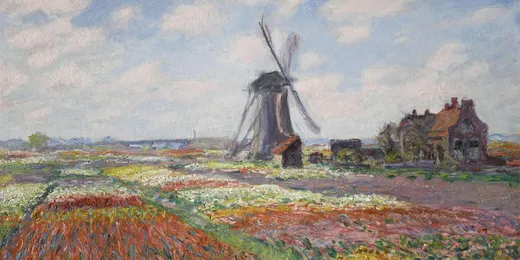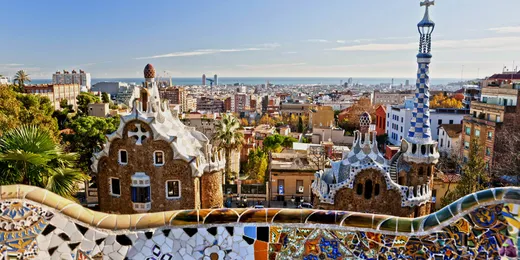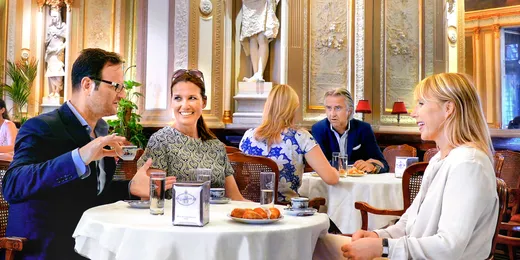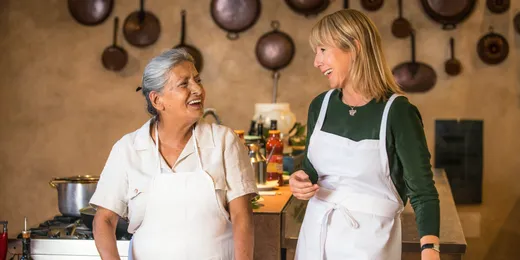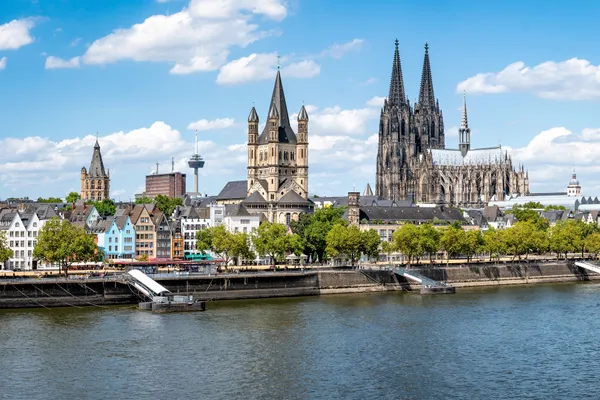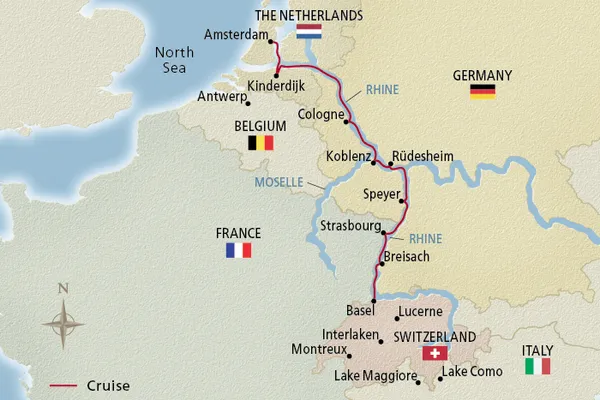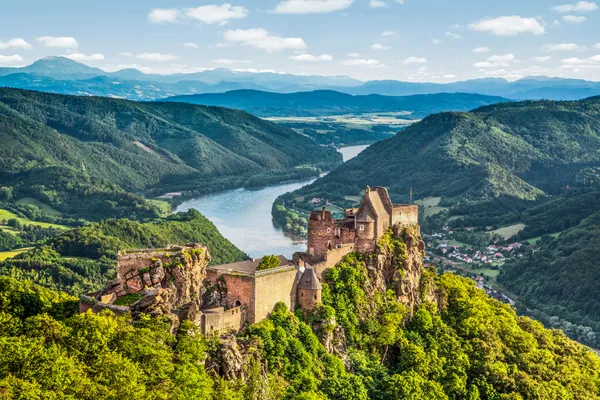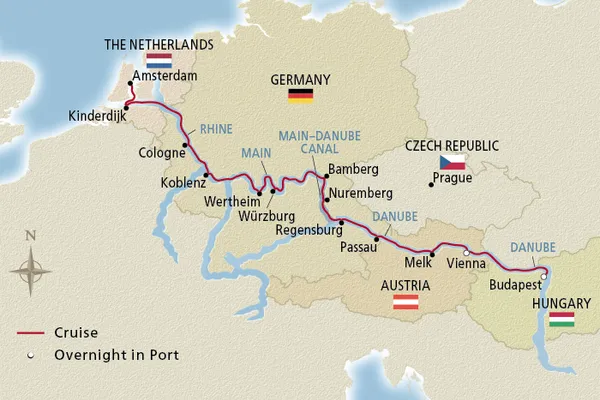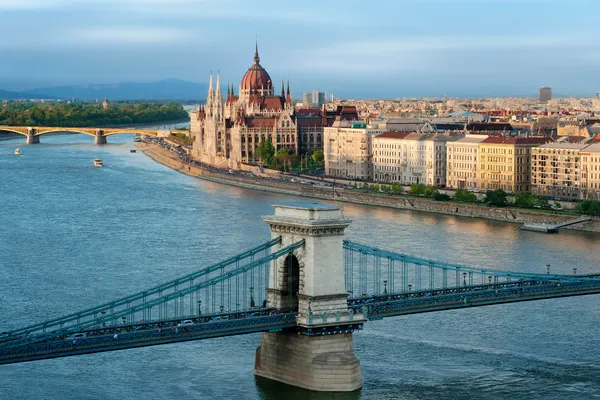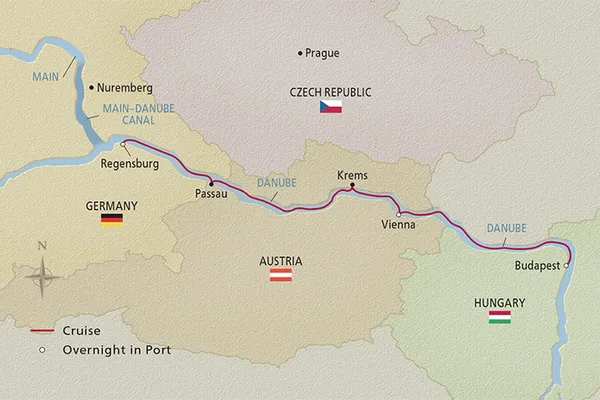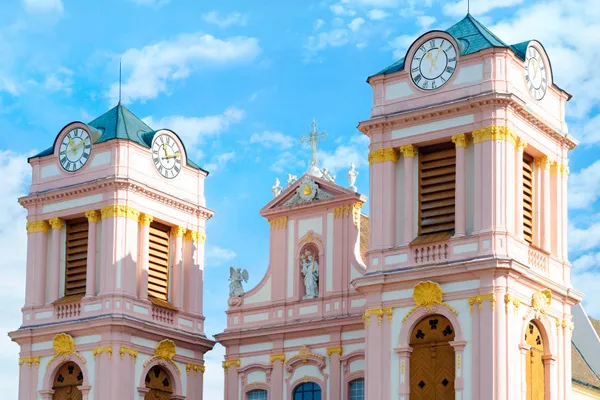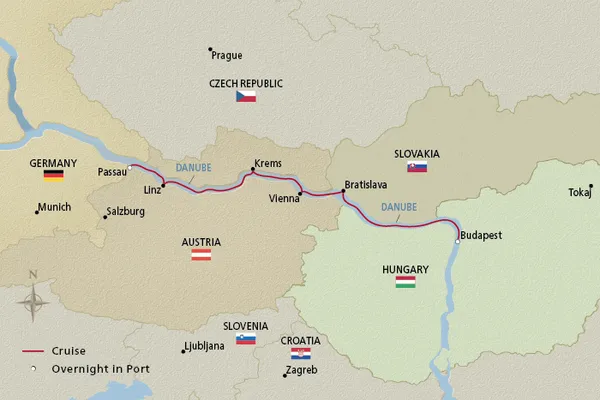
Be inspired by Europe’s history & culture
Discover the storied cities and signature old-world charm of Europe. Read on to learn more about the countries that comprise this diverse region and delve into the unique experiences that await you in Italy, France, Germany and beyond. Trace the history of an iconic Swiss dish, uncover some common misconceptions about Spain’s siesta tradition and explore the powerful legacy of Normandy’s beaches.

Europe
Europe, the second smallest of the world’s continents, is a treasure trove of natural beauty and historical significance. It is bordered by the Arctic Ocean to the north, the Atlantic Ocean to the west and the Mediterranean Sea, Black Sea and Caspian Sea to the south. Europe is home to 44 countries, including England, Ireland, France, Germany, Italy, Hungary, Spain, Greece and many others. Each country offers its own rich history and unique landscapes, from the snowy peaks of Austria and Switzerland in the Alps to the sunny beaches of the French Riviera and the Adriatic Sea. The climate varies greatly, with temperate conditions in the west, Mediterranean climates in the south, and colder, more continental climates in the east and north.
Over the centuries, Europe’s rich culture has been reflected in its music, art, architecture and cuisine, which have had a profound influence on the world. The continent is known for its remarkable landmarks and ancient sites, such as:
- The Eiffel Tower—Located in Paris, France, this iconic structure is one of the most recognizable landmarks in the world.
- The Colosseum—This ancient amphitheater in Rome, Italy, is a testament to the grandeur of the Roman Empire.
- The Acropolis—Situated in Athens, Greece, this ancient citadel is home to several significant historical buildings, including the Parthenon.
- The Alps—Stretching across several countries, including France, Switzerland and Austria, the Alps offer breathtaking natural beauty and are a popular destination for skiing and hiking.
- The Louvre Museum—Located in the heart of Paris, the Louvre is the world's largest art museum and a historic monument.
- La Sagrada Família—This large, unfinished Roman Catholic basilica in Barcelona, Spain, is a masterpiece of architect Antoni Gaudí.
- Stonehenge—This mysterious monument in Wiltshire, England, is one of the world's most famous prehistoric landmarks.
- Geirangerfjord—Norway’s stunning, UNESCO-listed fjord is one of Europe’s most cherished natural treasures and home to majestic waterfalls that can be visited even in the winter.
Europe’s diverse landscapes and climates, combined with its rich cultural heritage, make it a fascinating year-round destination for travelers from around the world. Whether exploring cosmopolitan cities, the picturesque countryside or historic landmarks, visitors are sure to be captivated by the continent's charm and beauty.

-
Cuisine—The history of Swiss fondue
Few things are as comforting as a piping-hot meal of fondue. This deceptively simple dish of cubed bread dipped in warm, melted cheese was declared the national dish of Switzerland during the 1930s. In the years since, this culinary delight has grown from humble entrée to worldwide indulgence.
The origins of fondue can be traced to 18th-century Switzerland, when families in Alpine farm villages invented the dish to use up their stale bread, excess cheese and day-old wine. Dipping the hardened bread into the cheese made it soft and delicious once more, while heating the wine along with the cheese enhanced the flavors of both ingredients. From these unassuming origins grew a beloved winter tradition.
Throughout Switzerland, various regions boast their own favored fondue iterations. In Valais, for example, Gruyère is often mixed with raclette, whereas those in Bern prefer to blend their Gruyère with Emmental (i.e., what most Westerners call “Swiss cheese”). No matter how it is prepared, you are sure to enjoy the delicious, indulgent flavors of this classically Swiss combination.
-
Culture—The Spanish siesta tradition
Here is a scenario that might be familiar to many a traveler in Spain. Having spent the morning exploring some charming village, you decide around noon that a cool glass of sangria and a savory bocadillo sandwich may be just what you need. But none of the restaurants seem to be open. It might occur to you that things have shut down for the siesta, the traditional afternoon nap that is still observed in many parts of Spain. But, that would not be technically correct.
Most restaurants in Spain don’t open until about 2:00 PM, when businesses close for the long midday break called mediodía (midday). Spaniards usually have a light breakfast followed by a late-morning snack called an almuerzo. Around 2:00 PM comes la comida, the largest meal of the day, which can be a three-course social affair, perhaps with wine. The actual napping, the siesta, comes after this heavy meal and lasts for only about 15 minutes. Workers may return to work after their comida or siesta and finish by 8:00 PM. They may then visit a tapas bar for drinks and snacks before the last meal of the day, the light supper called la cena, served between 9:00 and 11:00 PM.
While many foreigners have uncharitably labeled the Spanish as “lazy” because of their siestas, Spaniards actually work longer hours than their European counterparts and get less sleep. In fact, midday naps have been a part of many cultures for thousands of years, particularly those in warmer climates where the populace needed rest and shelter from the noontime sun. Yet, despite ample scientific evidence that napping is good for productivity, cardiac health and emotional well-being, the siesta tradition could soon be put to permanent rest.
-
History—A pilgrimage to the Normandy beaches
The Normandy beaches, famously etched into history on June 6, 1944, during the Allied invasion of Nazi-occupied France, hold a unique place in the hearts and minds of visitors today. Walking along the revered shores of Utah, Omaha, Gold, Juno and Sword, the remnants of D-Day serve as a powerful testament to the bravery and sacrifice of countless soldiers.
Along the beaches are poignant reminders of the monumental events that unfolded here. Among the most striking are the rusted remains of German bunkers, guns still aimed at the empty beaches and the abandoned Mulberry Harbor. A visit to these sobering sites offers travelers a rare opportunity to experience history on such a visceral level.
A short distance from the beaches, you will find the church of Sainte-Mère-Église, which served as a makeshift field hospital during the invasion. This is also where American paratrooper John Steele’s parachute was famously caught on the church’s steeple, making it a special place to remember the brave paratroopers of the Allied forces. Today, the D-Day beaches remain a storied landmark where one can reflect on the impact of this historic event on the course of world history.
Europe Highlights
Europe’s treasures reveal themselves in countless ways—from the breathtaking fjords of Norway to the storied shores of antiquity along the Mediterranean. Home to iconic cities like Venice, Vienna, Copenhagen, Prague and Dublin, as well as charming medieval villages, this is a continent best explored via its waterways. Here are a few of the highlights you may experience on a European journey:
- A leisurely boat ride through Amsterdam’s famous canals
- Lively tapas bars showcasing Spain’s culinary scene
- The diverse collection of the British Museum in London
- The UNESCO-listed Palace of the Popes in Avignon
- Lisbon’s Jerónimos Monastery, a Manueline masterpiece
- The impressive collections of the Louvre Museum in Paris
- A moving visit to the Berlin Wall Memorial
- Porto’s famous ruby-colored fortified wine
Destination Insight Videos
-
The Impressionists (3:19)
Learn the story of how impressionist paintings by Monet, Renoir, Cézanne and Degas forever changed the face of the art world and became a symbol of modern French life. Follow these iconic artists’ footsteps on a France river cruise with Viking.
-
Antoni Gaudí’s Architecture (3:53)
Step into the mind of Antoni Gaudí, the colorful Barcelona artist whose passion for nature led him to create astounding biomimetic architecture and seven UNESCO World Heritage Sites.
-
Inside Italy’s Coffee Culture (4:03)
If you cannot tell your macchiato from your espresso corto or you do not know why you should drink your coffee standing, join Karine and friends to explore Italy’s thriving coffee culture.
-
Fresh Pasta: Fast, Fun and Easy! (5:06)
Venture into the Tuscan countryside to learn the art of making fresh pasta. Under the watchful eye of a delightful Italian mama, Karine learns the secrets of this Italian favorite.
Europe Travel FAQ
Enriching Itineraries—Europe
Choose one of our immersive voyages and discover the many benefits of exploring in Viking comfort.



